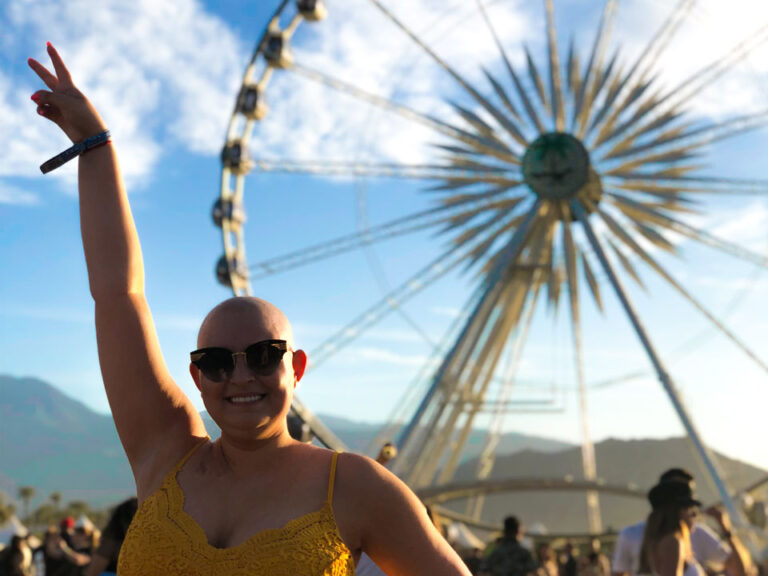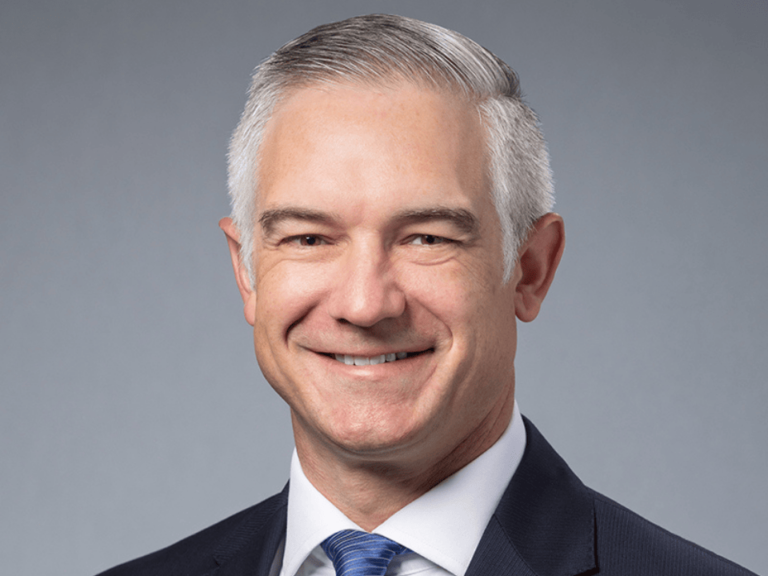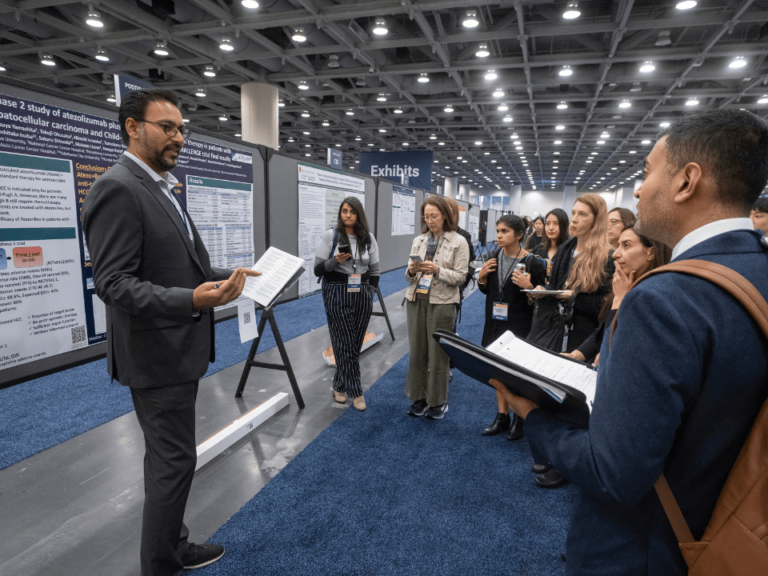This story is part of The Cancer Letter’s ongoing coverage of COVID-19’s impact on oncology. A full list of our coverage is available here.
The past two decades have brought hope to myeloma patients, as the majority benefit from the significant advances in chemotherapy.
According to data from the NCI Surveillance, Epidemiology, and End Results Program, the risk of death from multiple myeloma declined by 18.75% between 2000 and 2017, the last year for which numbers are available. During that time, incidence went up from 6 to 6.7 cases per 100,000 while deaths dropped from 3.8 to 3.2 per 100,000.
This decline in mortality can be attributed to the introduction of novel agents for induction and maintenance therapy and the standardization of consolidation therapy in this disease.
This journey is not finished, and we are in the midst of the next revolution in myeloma therapy. Rational development of combination immunotherapy for myeloma coupled with diligent translational science will lay the path to a cure for this disease.
Progress will come against the backdrop of the COVID-19 pandemic and its aftermath. This unprecedented healthcare crisis upended the conduct of clinical trials, slowing screening and enrollment to a trickle, and presenting logistical challenges to management of enrolled patients.
Investigators had to balance two imperatives that at times seemed opposed:
Decreasing or eliminating clinic visits and infusions to minimize risk of exposure to SARS-CoV-2, and
Safe continuation of investigational therapy.
The past five months have demonstrated that satisfying these two requirements is both feasible and scalable. For the Myeloma-Developing Regimens Using Genomics (MyDRUG) trial (NCT03732703, sponsored by the Multiple Myeloma Research Consortium), many of the investigational agents are oral, and we secured agreement from our pharmaceutical partners to allow direct shipping of investigational agents to patients’ homes, utilizing local labs for monitoring to minimize trips to urban areas and tertiary care centers, and telemedicine for investigator follow-up visits.
Some health systems went even further in the management of COVID-19 patients, implementing “virtual hospital” plans in which patients received hospital-level care at home, utilizing visiting health care professionals, home therapy, including infusions, and remote lab monitoring.
These innovative responses to an extraordinary crisis show that clinical care may be safely delivered without undue risk or burden to patients. Therefore, it is worthwhile to incorporate such practices into clinical trial design to preserve patient safety and minimize barriers to patient consent such as frequent travel, which in turn may accelerate enrollment.
It is worthwhile to note that the subcutaneous formulation daratumumab faspro was just approved, and that similar injectable formulations are under clinical investigation for isatuximab and several bispecific T cell engaging agents, predicting much shorter treatment visits and possibly even home administration.
These innovations, along with companion oral medications, telemedicine and remote vitals monitoring (e.g. wearables), and flexibility in lab monitoring (local labs, mailer kits), may speed accrual and decrease costs for future IO trials in multiple myeloma.
Immunologic therapy
Research into immunologic therapy for multiple myeloma is based on clinical evidence that it has the potential for cure.
In a landmark series of reports in the late 90s, patients undergoing allogeneic bone marrow transplantation for multiple myeloma demonstrated a plateau in long-term disease-free survival, proving that the graft-vs-myeloma effect could control the disease.
Furthermore, patients who had relapsed after allogeneic transplant could be put into durable remission with donor lymphocyte infusion, indicating that anti-tumor lymphocyte activity was responsible for these remarkable results.
Despite this, clinical research in myeloma was dominated by the introduction of proteasome inhibitors (bortezomib, carfilzomib), IMiDs (thalidomide, lenalidomide, pomalidomide), and the acceptance of high-dose chemotherapy and autologous stem cell rescue (auto-transplant) as standard consolidation therapy. These innovations had a dramatic effect on survival and quality of life, but have not yet produced broadly applicable curative therapy.
The urgent need for immunologic agents that could replicate the outcomes in allogeneic transplant without the significant morbidity and mortality risks went unfulfilled until the introduction of elotuzumab, a monoclonal antibody (mAb) that recognized SLAMF7, and the anti-CD38 mAb daratumumab (a second anti-CD38 mAb, isatuximab, was recently approved by the FDA).
These agents were introduced based on the hypothesis that they would act as “targeting antibodies” that opsonized myeloma cells expressing the respective ligands on their cell surface, making them vulnerable to antibody-dependent, cell-mediated cytotoxicity (ADCC) and complement-dependent cytotoxicity (CDC). Emerging clinical and laboratory data indicate that these agents also have powerful effects on the immune system. SLAMF7 is an activating receptor expressed on natural killer (NK) cells, and crosslinking with elotuzumab rendered NK cells capable of killing myeloma cells even if they were not coated with elotuzumab. CD38 is an ectoenzyme that catalyzes the rate-limiting step in the conversion of extracellular nicotine adenine dinucleotide (NAD) to adenosine, and inhibition of this activity with daratumumab may inhibit regulatory T cell (Treg) and promote cytotoxic T lymphocyte (CTL) activity.
Interestingly, upregulation of immune checkpoint molecules, including PD-L1, LAG-3, and TIGIT, are associated with progression of disease during treatment with daratumumab, further supporting a T cell-mediated mechanism for efficacy.
Furthermore, the immunomodulatory drugs are living up to their name. In addition to their cytotoxic effects on myeloma cells, ImiDs have a broad range of favorable effects on the immune system mediated by modifying the activity of the ubiquitin ligase cereblon.
ImiDs promote maturation of dendritic cells, the principle antigen-presenting cells, and activation of B, T, and NK cells. These agents are attractive partners for combination immunotherapy. In fact, combinations of elotuzumab and daratumumab with either lenalidomide or pomalidomide produced unprecedented response and progression-free survival results in relapse/refractory multiple myeloma that support the current investigations into daratumumab-based combination therapy in frontline treatment.
We are now in the midst of an explosive proliferation in immune-based therapies for multiple myeloma, including engineered Chimeric Antigen Receptor (CAR) T cells, bi-specific T or NK cell engaging agents, antibody-drug conjugates (ADCs), and novel mAbs targeting immune checkpoints and other functional immunologic molecules.
Many of these agents are in late stage clinical trials, and the FDA’s Oncologic Drugs Advisory Committee earlier this month unanimously voted in favor of approval of the BCMA ADC belantamab mafedotin (The Cancer Letter, July 17, 2020).
Novel strategies
This dazzling array of novel strategies highlights both the promise and the challenges in developing curative therapy for myeloma.
This may be conceptualized in the context of the “Cancer-Immunity Cycle” proposed by Chen and Mellman in a review article in 2013 (Immunity 39:1, 2013), which posited that the initiation and propagation of successful anti-tumor immunity depended on an orderly succession of events: immunogenic tumor cell death and the release of tumor-associated antigens at the tumor site, uptake of these antigens by APC and trafficking to secondary lymphoid tissue, interactions with Ag-specific CD4 T helper and CD8 cytotoxic T cells, egress of these Ag-specific T cells to the circulation and homing back to the tumor site, recognition of Ag displayed on the tumor in the context of major histocompatibility complex (MHC) class I, and activation of T cell killing mechanisms to induce immunogenic cell death, thus continuing the cycle.
This model highlights two critical concepts.
First, anti-tumor immunity requires multiple steps that are dissociated in both space and time, and second, that tumors may have resistance mechanisms that interfere with one or more of these steps. An immunologic agent that acts at one or a few of these steps will only demonstrate clinical activity if all the other steps are favorably aligned, which explains the relatively low response rates of single agents in this context. Therefore, combination therapy is the logical goal to achieve robust response rates and durable remissions in a large population of myeloma patients.
The elotuzumab experience is instructive in this context. In phase 1 studies, elotuzumab showed no single agent activity whereas the combination with lenalidomide had a significant response rate. The phase 1b/2 ELOQUENT-2 study of elo len dex vs len dex in relapsed/refractory myeloma, the elo len dex combination had a 79% response rate and median progression-free survival of 21 months, both showing superiority over the control arm.
Furthermore, the POLLUX study of daratumumab len dex vs len dex in relapsed/refractory myeloma demonstrated a remarkable 93% response rate and median PFS of 44.5 months, vastly superior to the control arm. Long term follow-up of both of these studies showed favorable 4-year progression-free and overall survival benefit, particularly in the POLLUX study, indicating that for a subset of myeloma patients, these combinations contributed to long-term control of their disease.
We are now faced with the challenge of converting these remarkable results in small subsets of patients into regimens that are effective in larger populations. The approved and investigational agents act at every point in the Cancer-Immunity Cycle and many of them can neutralize or bypass mechanisms of tumor immune evasion. Rational combinations of immunologic therapies may favorably align the cycle and confer long term remission as was promised by the allogeneic transplant experience.
These combinations may include approved myeloma drugs such as ImiDs and even conventional cytotoxic agents such as cyclophosphamide, which can induce immunogenic cell death and reduce Treg cell numbers and activity.
These clinical trials must be paired with robust correlative science as we need to understand the actions of these therapies on myeloma cells and the tumor microenvironment in the bone marrow. Leading edge technologies such as high dimensional immunophenotyping by mass cytometry or single cell RNA sequencing, immune-oncology proteomics, and T cell clonal diversity by T cell receptor sequencing brings powerful, data-driven analysis of the immune response at a level comparable to genomics and gene expression analysis of tumor cells.
These studies may verify mechanisms of action, reveal novel biomarkers of response or resistance, and identify associated targets in these trials. These studies may also identify novel methods of patient selection that, in concert with tumor intrinsic factors such as cytogenetic abnormalities, may categorize patients that may be best served by specific therapies. Understanding this complex biology is essential to further advances.
There also needs to be broader thinking about the design of such trials, as therapies designed to modulate the anti-myeloma immune response are fundamentally different than cytotoxics or small molecule inhibitors intended to kill tumor cells. The Cancer-Immunity Cycle is a complex orchestrated process, and manipulations may be better accomplished with measured sculpting rather than hammer strikes. The concept of “maximum tolerated dose” may be less applicable compared to “minimum effective dose.”
Again, the elotuzumab experience is instructive.
In phase Ib studies, two dose levels of elotuzumab, 10 mg/kg and 20 mg/kg IV weekly were tested in combination with lenalidomide. The 20 mg/kg dose combination had both a lower response rate and shorter PFS compared to the 10 mg/kg dose, indicating that the higher dose, while tolerable, adversely affected the overall activity of the combination.
It is also time to revisit the concept of sequential therapy. There is already widespread acceptance of sequential therapy for myeloma, as we routinely treat patients with induction, consolidation, and then maintenance therapy. For immunotherapy, there is a strong rationale to leverage the cyclic nature of the Cancer-Immunity Cycle to sequence or alternate immunologic cell death by cytotoxics, ImiD/proteasome inhibitor combinations, or novel agents such as CAR-T cells or ADCs, with promoters of T cell immunity such as anti-CD38 mAbs, bi-specifics, or immune checkpoint inhibitors.
This concept may be extended, for example, to sequence cytotoxic induction therapy with immunologic maintenance. These novel trial designs may fall outside the normal registration path of a new agent, but in order to fulfill the potential of a given therapy, the biology of the agent must be respected. It is likely that novel diagnostic approaches such as combined immune and tumor genomic profiling and innovative trial designs will yield rationally-designed combination therapies that are tailored for specific myeloma populations.
Finally, the criteria upon which these trials are assessed is in evolution.
Approval criteria evolve
Prior to the introduction of lenalidomide and bortezomib, median survival for myeloma patients was three years or less.
Therefore, demonstration of overall survival benefit was a reasonable goal of a registration trial.
The remarkable pace of progress has raised this bar very high.
It is notable that the last two multiple myeloma drugs to receive regular approval based on endpoints that included OS were approved in 2015, in the beginning of a surge of approvals.
Both were approved based on OS and progression-free survival.
Since 2015, 11 drugs received regular approval based on PFS alone, one based on PFS and overall response rate, and one based on ORR alone.
The only previous regular approval based on OS in multiple myeloma occurred in 2005.
A table listing two decades’ worth of accelerated and regular approvals in multiple myeloma appears below.
In this time frame, we see that mortality in multiple myeloma overall has dramatically decreased, and it is likely that this figure is in evolution, as the full effect of newer immune therapies, both approved and investigational, are manifest.
This fact strongly supports the concept that surrogate endpoints—particularly PFS—are appropriate in assessing the efficacy of novel myeloma therapies.
Validation of endpoints continues.
There is now a vigorous debate on the use of Minimal Residual Disease (MRD) as a surrogate endpoint in myeloma clinical trials, as overall survival may unreasonably extend the assessment period and delay introduction of needed agents to standard care.
We see that mortality in multiple myeloma overall has dramatically decreased, and it is likely that this figure is in evolution, as the full effect of newer immune therapies, both approved and investigational, are manifest.
Although the FDA has not accepted this as a surrogate endpoint yet, it is critical to build these novel measures into myeloma immunology trials to understand their relation to traditional measures such as overall response rate and PFS. Further complicating matters, there are competing MRD assays, including flow cytometry, B cell receptor sequencing, and mass spectrometry detection of the M-protein in peripheral blood, and further clinical investigation is needed to determine the best assays and applications.
Laboratory and clinical investigation have yielded a remarkable array of novel agents, treatment regimens, and diagnostic technologies. The challenge is to find the rational combinations, sequences, and clinical trial practices that will finally deliver curative therapy.















